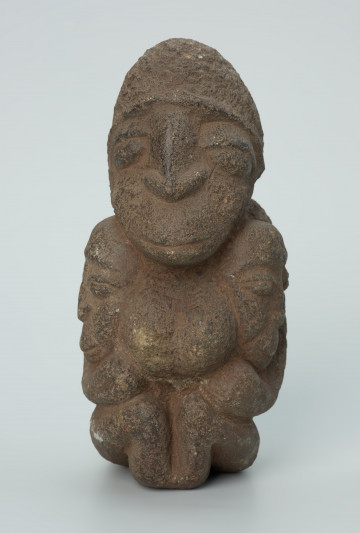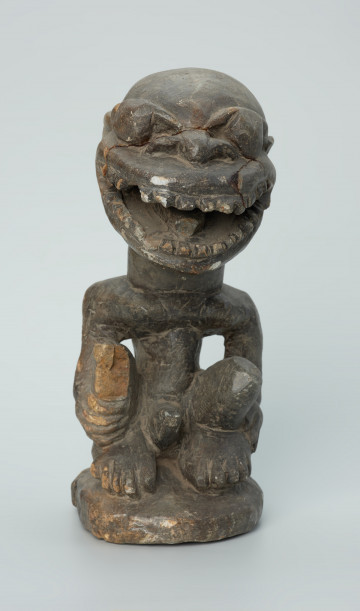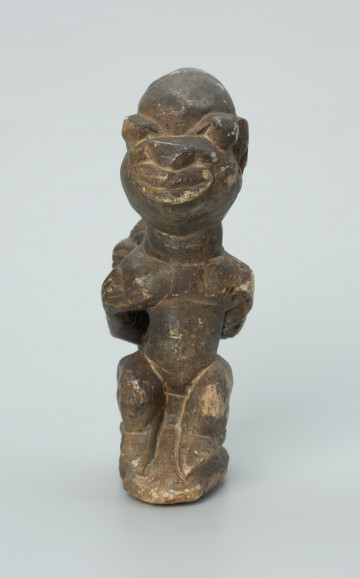
Figure of cult of dead
1901 — 1973
National Museum in Szczecin
Part of the collection: Stone figurines from West Africa
The pomdo dead cult figurine carved in soapstone depicts a human figure in a sitting position with legs contracted. Soapstone sculptures are rare in sub-Saharan Africa. Discovered during agricultural work in Sierra Leone by the Mende, Kono, Temne and Limba peoples, they are called nomolisia (singular nomoli), while in neighbouring Guinea and Liberia by the Kissi among others, they are called pomda or pomta (singular pomdo). Each discovery is read as a good sign. The Kissi regard these sculptures as returning ancestors, while the Sierra Leoneans are guardian spirits of the harvest.The problem is the dating of the pomda and nomolisia figures and the identification of the ethnic group whose representatives made them. According to some researchers, they date from the 15th-16th centuries, from the first contacts between the Portuguese and the coastal inhabitants of Sierra Leone, as evidenced by elements of 16th-century Portuguese dress visible on the sculptures. In recent decades, both nomolisia and pomda have become a tourist product, a unique souvenir from the rarely visited extremities of West Africa.
Katarzyna Findlik-Gawron
Author / creator
Dimensions
cały obiekt: height: 25,6 cm, width: 11,5 cm
Object type
figure
Creation time / dating
Creation / finding place
Identification number
Location / status

1901 — 1973
National Museum in Szczecin

1901 — 1971
National Museum in Szczecin

1901 — 1971
National Museum in Szczecin
DISCOVER this TOPIC
National Museum in Lublin
DISCOVER this PATH
Educational path